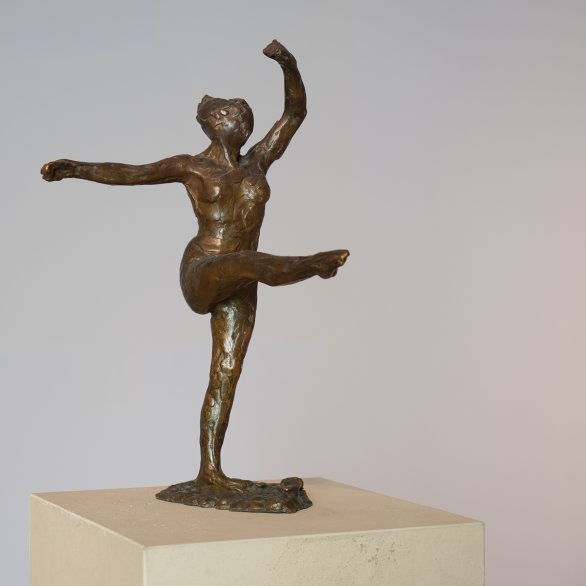Over the last ten years, a flood of performances and live artworks has taken exhibitions and museums by storm. This sudden interest might suggest that a fascination with the immediate experience - the 'now' - is a particular characteristic and a central theme of the 21st century. But a closer look reveals that artists have been exploring the fleeting, moving nature of dance and dancers since the late 19th century. In times when artists were looking for new forms of expression and wanted to push the boundaries of classical art, the dancing body was seen as the epitome of immediate, "pure" creativity. At the same time, however, the body on stage was always a place where social ideas of ideal images, identity and biography were negotiated. The desire to understand the ephemeral nature of dance therefore has a long tradition. The historical arc of the exhibition ranges from Edgar Degas to new works created especially for the exhibition.
So lässt sich nachvollziehen, wie der Tanz und der tanzende Körper Künstler*innen immer wieder dazu inspiriert haben, Themen wie Geschlecht, Sexualität und „Rasse“ aufzugreifen und durch die flüchtigen Formen des Tanzes zu reflektieren.
Ausgehend von den Tänzerinnen-Skulpturen von Degas bewegt sich die Ausstellung über zeitgenössische Werke bis hin zu Live-Performances, die im Atrium der Kunsthalle stattfinden werden. Die Kunsthalle Mannheim rückt so die 125 Jahre lange Interaktion zwischen Tanz und bildender Kunst in den Mittelpunkt.
Kurator: Johan Holten
Ausgehend von den Tänzerinnen-Skulpturen von Degas bewegt sich die Ausstellung über zeitgenössische Werke bis hin zu Live-Performances, die im Atrium der Kunsthalle stattfinden werden. Die Kunsthalle Mannheim rückt so die 125 Jahre lange Interaktion zwischen Tanz und bildender Kunst in den Mittelpunkt.
Kurator: Johan Holten

